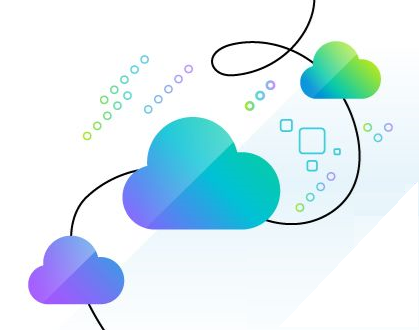What is desktop virtualization?

Introduction
In basic terms, desktop virtualization is a method of setting up a single host computer to support multiple user workstations. The end users connect to their workstations—also called virtual desktops—remotely. The virtual desktop is separate from the physical device that the user uses to access it.
The host computer—often called a desktop virtualization server—is a hypervisor that resides in an on-premises data center or in the public cloud. The hypervisor provides the software that runs multiple virtual desktops, including a variety of operating systems, applications, personal settings, user data, and so on. The hypervisor isolates each virtual desktop from the others, and supervises the allocation of underlying resources among them, such as memory, CPU power, network bandwidth, and so on.
What are the benefits of desktop virtualization?
The benefits of using virtual desktops add up:
Resource management

- Cost savings. You cut costs when you centralize resources in a single host computer to support multiple virtual desktops, instead of installing multiple physical desktops on stand-alone devices. In addition, the costs of powering and maintaining a few host computers is lower compared to multiple physical devices.
- Time savings. You save time as well. Centralization makes installation and maintenance more efficient. When you need to push OS and application updates, upgrades, and patches, you do it once on the host and roll it out to multiple end-user devices.
- Hardware savings. You can deploy less costly desktops, laptops, tablets, and smartphones, because they only need to handle is input and output. Each physical device costs less to replace, and the user data and programs are safe in the desktop virtualization server, instead of vulnerable on the end user’s client device.
Remote workforce enablement

- Enablement speed. You can provision new user desktops and make them available almost instantly for new users to access.
- Use flexibility. Your end users can access enterprise resources no matter what device or OS they use: desktop, laptop, tablet, or smartphone. You can focus your IT support resources on the virtualization servers without worrying about the physical end-user device that access the virtual desktop.
- Location flexibility. Since apps are served to the client over a network, your end users can access their business applications from anywhere that has Internet connectivity. And if a user leaves the organization, the resources that were used for their virtual desktop are returned to the central infrastructure.
Security management.
- Desktop virtualization means centralized security control. The OS and applications do not reside on user devices, so you can focus hardware security on the host desktop virtualization servers.
- Identity and access management with role-based permissions limit users to just the applications and data they are authorized to access, and nothing more.
- And if an end user leaves your organization, you don’t need to remove applications and data from their devices. Any and all data on the user device does not persist when the virtual desktop session ends.
What types of desktop virtualization are there?
There are three main modes of desktop virtualization:
- Virtual desktop infrastructure (VDI). With VDI, the virtual desktop simulates the familiar desktop computer. Whether the desktop virtualization server is on-premises or in the cloud, the initial setup can be an investment, but it eliminates the need to refresh end-user devices.
- Remote Desktop Services (RDS). With RDS, the end-user’s local device runs its own OS, and RDS streams applications to it. RDS systems can handle more users because only applications are virtualized, instead of the entire Windows, Mac, or Linux desktop.
- Desktop as a service (DaaS). With DaaS, service providers do the job of providing desktop virtualization. Your organization can out-source the desktop virtualization, which makes the monthly costs much more predictable.
Desktop virtualization using Omnissa Horizon
If you’re interested in desktop virtualization, Omnissa Horizon is the place to go. Horizon is a virtualization software product for delivering desktops and applications on Windows, Linux, and MacOS systems.
Everybody from sys admins to pizza deliverers needs easy and secure access to the apps and desktops that help them do their jobs. Horizon provides that.
For more about Horizon, see What Is Omnissa Horizon?
Additional resources
You will find no shortage of information about desktop virtualization:
- What Is Omnissa Horizon?
- Horizon Architecture
- Multi-Cloud Virtual Desktops and Applications with Omnissa Horizon
- Manually Creating Optimized Windows Images for Horizon VMs
- Understanding Windows Group Policies: Workspace ONE Operational Tutorial
- Deploying Traditional Win32 Applications to Windows Devices: Workspace ONE Operational Tutorial
- Evaluation Guide for App Volumes 4
- Troubleshooting Windows Devices: Workspace ONE Operational Tutorial
